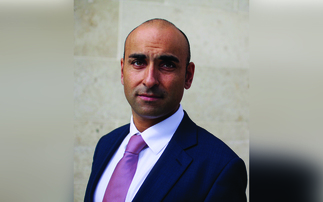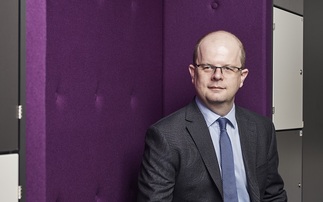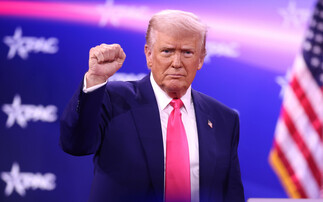Industry Voice: Star CEOs are bringing into question what makes a good leader in a flatter, networked world. We explore what this means for the overall governance of companies
If Google or Baidu didn't exist, would we have search engines? If Mark Zuckerberg hadn't dreamt up Facebook in his dorm room, would we have social media platforms? These may seem absurd questions, as the answer is an obvious ‘yes', yet the god-like status we imbue on the leaders of organisations often borders on the fanatical. However, when you consider that the incandescent lightbulb was invented by twenty different people within the space of a couple of decades, the randomness of who apparently ‘succeeds' is hard to comprehend.
Nevertheless, every era has its stars and the rewards on offer for those who can be the face of the company, as well as its innovator and driver, can be immense - stock options worth more than a billion dollars, for instance.1
However, perhaps a little more reflection is needed as to whether any one individual executive can really be responsible for the success of a large, global company. "Systems that have evolved over time, the wider economic context, the contribution of the workforce as a whole…these are all things that can shape performance too," says Luke Hildyard of the UK's High Pay Unit, one of the independent bodies that surveys executive compensation trends. "Whether a single executive deserves to take all the credit is questionable."
Yet while the compensation landscape has been changing, compensation committees have often felt reluctant to brake or put downward pressure on pay awards for fear of losing the best talent. Although plenty of effort has gone into assessing annual awards, the cumulative effects often dwarf them.2
Unsurprisingly, interest has grown in capping total compensation, to prevent any single individual heading off with an uncomfortably large reward. Other ideas include adding debt and convertibles to compensation packages as well; to sensitise debt-holders to bankruptcy risk and recovery value should the company fail.3 The aim is to get insiders with genuine ‘skin in the game'.
Ultimately, the balance between director and dictator can be a fine one. Organisations take their cues from the top and corporate culture is shaped by the examples set at the executive level, placing huge pressure on ensuring the right leadership tone. Strong decision-making with clear direction and focus can easily veer into autocracy. "For businesses to thrive in the long-term, they need a clear vision, a competent CEO and a strong board to challenge, guide and assist," according to Mirza Baig, global head of governance at Aviva Investors.
Instead, diverse boards made up of independent-minded people prepared to ask tricky questions can help navigate. Awkward subjects - like the rationale for overly-ambitious acquisitions or the need for better succession planning - cannot be ignored.
Shareholders have a critical role to play. By expressing their views and using their votes actively, they can help regulate company behaviour. "Investors should use their voices to bring about change," says Steve Waygood, chief responsible investment officer at Aviva Investors. "It helps to accelerate corporate action."
Corporate structures of the future
Today's more fluid organisational structures are challenging traditional beliefs about the optimal ways to organise and motivate, and, ultimately, how best to lead companies. Although leadership styles tend to change over time, evolving from visionary and commanding to more democratic and affiliative over time, there are deeper organisational changes going on as well.
"I've seen a gradual movement away from hierarchy towards a different form of collaborative human organisation," explains psychologist Dr. Meredith Belbin after years of work at Cranfield School of Management and Henley Business School. "We are in a transitional period and it's happening in all industries and, I believe, in all countries to a different extent. We need to understand the dynamics of teamwork, how we can use human resources to best advantage because this is applicable in a general way right across the world."
One way to explain the shift in focus is to look at the nature of problem solving. "When we solve problems, we climb landscapes," says Professor Scott Page, a complex systems specialist at the University of Michigan. "If one of us gets stuck, and if we all think in the same way, we're all stuck."4 Diversity fuels different ways of looking at the world - of how problems are perceived and how solutions are sought. To think differently is good.
Shared goals, shared culture - these are the features that drive and hold a team together. Traditionally, the practical side of this has fallen to managers. However, as we move to flatter models, the need for leaders to infuse such values is critical.
Demand for those who can carry a brand, give direction to a strategy and promote a feeling of belonging is unlikely to end any time soon. But more mature companies are also likely to need individuals with collaborative intelligences and formal governance structures to help them stay on track. Treading the right side of the director/dictator line will mean setting culture by example, being prepared to look beyond their own tenure and, most importantly, being prepared for a healthy dose of challenge.
- Musk's New Pay Deal Could Make Him the World's Richest Man—If Tesla Succeeds. Bloomberg. 23 January 2018.
- Does your CEO compensation plan provide the right incentives? McKinsey Quarterly. April 2012
- Executive Compensation: A survey of theory and evidence. Alex Edmans, Xavier Gabaix, Dirk Jenter. LSE & CEPR. 13 July 2017.
- The Difference: How the power of diversity creates better groups, firms, schools and societies. Scott E. Page. 2007.
For further information on our range of funds, please visit our website or contact your usual sales representative or our investment sales team
Tel: 020 7809 6521*
Email: [email protected]
Website: https://www.avivainvestors.com/en-gb/
*Calls to this number may be recorded for training and monitoring purposes, and to comply with applicable law and regulations.
Important information
This document is for professional clients and advisers only. Not to be viewed by or used with retail clients.
Except where stated as otherwise, the source of all information is Aviva Investors Global Services Limited (AIGSL). As at 25 September 2018. Unless stated otherwise any views and opinions are those of Aviva Investors. They should not be viewed as indicating any guarantee of return from an investment managed by Aviva Investors nor as advice of any nature. Information contained herein has been obtained from sources believed to be reliable but has not been independently verified by Aviva Investors and is not guaranteed to be accurate. Past performance is not a guide to the future. The value of an investment and any income from it may go down as well as up and the investor may not get back the original amount invested. Nothing in this material, including any references to specific securities, assets classes and financial markets is intended to or should be construed as advice or recommendations of any nature. This material is not a recommendation to sell or purchase any investment.
Issued by Aviva Investors Global Services Limited, the Investment Manager to the Fund registered in England No. 1151805. Registered Office: St Helens, 1 Undershaft, London, EC3P 3DQ. Authorised and regulated by the Financial Conduct Authority (Firm Reference No. 1191780).
RA19/0182/31052019










